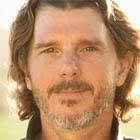
“We are each an experiment of one,” George Sheehan famously wrote regarding the need to individualize our running. While oft-quoted, Sheehan’s maxim is, however, too rarely applied.
A quick google search reveals a wealth of research proving the maxim’s truth. A 2009 Swedish study on aerobic capacity, for example, found “substantial interindividual variability in training-induced adaptations.” Not only did they discover high- and low-responders to the standard training protocol, the study found that athletes responded differently for each measured parameter: some improved in V02Max, some in lactate processing, some in maximum work capacity, and so on.
Other studies have shown that some runners get faster with high intensity training while some don’t—but might instead improve with high volume. Some athletes adapt quickly to training while others need more miles, intensity or time to improve. Studies have even found individual variances in how athletes respond to caffeine or altitude.
This shouldn’t come as a surprise. We don’t need scientific proof to notice that one training partner can easily run 70-mile weeks while another gets injured whenever she gets over 45. That one teammate sees his times drop after a few speed workouts while another comes off summer miles cruising but then develops dead legs as soon as intervals and races start stacking up. That a running buddy who finishes behind you in every workout might consistently beat you on race day.
Why then, with overwhelming scientific and observational evidence that we are each unique, do we persist in comparing with others or following standard training plans? Here are a few thoughts.
Keeping up with Tom

One big distraction is the voice that tells us we have to do more than our competitor to beat him or her. Tom Fleming, Two-time New York City Marathon champion and long-time coach, famously summed up this idea in a sign he reportedly hung on his bedroom wall: “Somewhere in the world there is someone training when you are not. When you race him, he will win.”
While such sentiment might help you train more consistently, the danger comes when we start believing in a one-to-one correlation between training and improvement. It’s hard to trust that fewer miles, reps, or workouts per week might make us more competitive, or to believe that a different training mix than our competitor could get us to the same place. The best workout for you, however, is the one that your body will adapt to. The goal is to become faster and more efficient, not to simply accumulate miles and workouts. Your best training plan isn’t going to be the same as anyone else’s in terms of pace, length of reps, total volume, recovery time or even emotional intensity.
“You can’t force a training plan on your body,” Greg McMillan wrote in You (Only Faster).“The plan must work with your body and your unique rate of recovery.”
Imposter Syndrome

Comparisons, however, don’t explain all of the reasons many of us fail to develop a custom running plan. Some runners who don’t know or care what others are doing still religiously follow standardized training plans. Part of the reason is simple: We don’t know how we should train and we fear that we’ll fail to gain the benefits and achieve our goals if we modify the plan.
There is some truth to this. Training plans are based around principles that work for the majority of people. Picking and choosing which part you want to do, or just doing whatever workout sounds fun today misses the point of having a plan—and won’t likely get you where you’re going. That said, religiously following a plan to injury, dead legs and tepid results is no better than doing random, willy-nilly workouts.
A better idea is to start with a plan, but then pay attention. You have to do the experiment, to act like a scientist. Note which workouts leave you dragging and which energize you. For each type of workout, pay attention to how long it takes until you start to feel recovered: faster, lighter, ready for more work. Pay attention to what level of volume makes you tired and sore, and what level makes you feel strong. Monitor how fast you can increase that volume without getting creaky and crabby. Track your responses to increased intensity. Note what you’ve been doing before those weeks when you come back from your run each day wishing you could go farther, before those days when you feel so good you can’t help but run fast.
Eventually you’ll discover whether you thrive on sprints or blossom with long runs. That, perhaps, you need three days to recover from quick intervals but can do strong tempo runs virtually back-to-back. That you need a third fewer, or a few more, repeats than called for in the plan to reach that maximum exhaustion point where fatigue threatens to exceed training stimulus. Once you’ve discovered this, you’ll be ready to adapt your best program to make you fast, strong, rested and ready. Be honest, be brutal, be brave—then trust yourself to be the expert on you.
The more you know about training the more personal you can get. Become a student of the sport. Delve into books like Daniel’s Running Formula, Pfitzinger’s Faster Road Racing and Advanced Marathoning, Hudson’s Run Faster, or the aforementioned McMillan’s You (Only Faster), which provides principles for designing custom running plans.
Premature Petrification

Once you’ve found a pattern that works for you, it’s easy to decide you just have to repeat it, that you’re done experimenting. You’re not.
The first reason is that you may have found one solution, but there might be a better one. Use an off-season when you’re not chasing a major goal to try a radically different plan. Don’t be foolishly consistent: Be open to the possibility that something new might be more effective. Or maybe you’ll want to tweak some elements of what has worked in the past.
The second reason you can’t stop is that neither the world nor you ever stop changing. The parameters of the experiment are always in flux; the answers are always temporary. “The serious problems in life are never fully solved,” psychologist Carl Jung wrote in The Stages of Life. “If ever they should appear to be so it is a sure sign that something has been lost.”
Jung argued that unchangeably clinging to one “right” solution shuts us off from the possibility of growth; we “grow dry and cramped in a narrow mould.” We become old, not just in years, but in attitude.
Jung suggests that we should, in fact, change the goal of the experiment. “The meaning and purpose of a problem seems to lie not in its solution but in our working at it incessantly,” Jung wrote. “This alone preserves us from stultification and petrification.”
By embracing the experiment itself as an ongoing quest, every day, every age of our lives can be equally challenging and rewarding. In the process of learning to train most effectively, we are each an experiment of one—an experiment that, thankfully, never ends and never gets boring.
__________________________
The Whole Athlete is a monthly running series written by Jonathan Beverly and brought to you by Topo Athletic. We aim to deliver advice that serves the whole athlete, from training and recovery to nutrition and psychology.
 Jonathan Beverly is author of Your Best Stride and Run Strong, Stay Hungry. A lifetime runner, his passion is to help others experience the joy of training, competing and being fit and fully alive.
Jonathan Beverly is author of Your Best Stride and Run Strong, Stay Hungry. A lifetime runner, his passion is to help others experience the joy of training, competing and being fit and fully alive.
He served as editor of Running Times from 2000-2015 and has coached runners of all ages and disciplines.
Jonathan, great article. I really like your writing. I miss the The Running Times Magazine. I know Runners World tried to combine the two but they really missed the mark for competitive runners ! Keep writing and running !
Thanks, John Webb
Yes! I used to feel like I had to run as many miles as my running friends, but that would lead to me get hurt, tired and burnt out. You have to do what works best for YOU. I have finally found a plan that works for me. I have also learned that rest (sleep) is an important part of recovery!!! Happy Running!